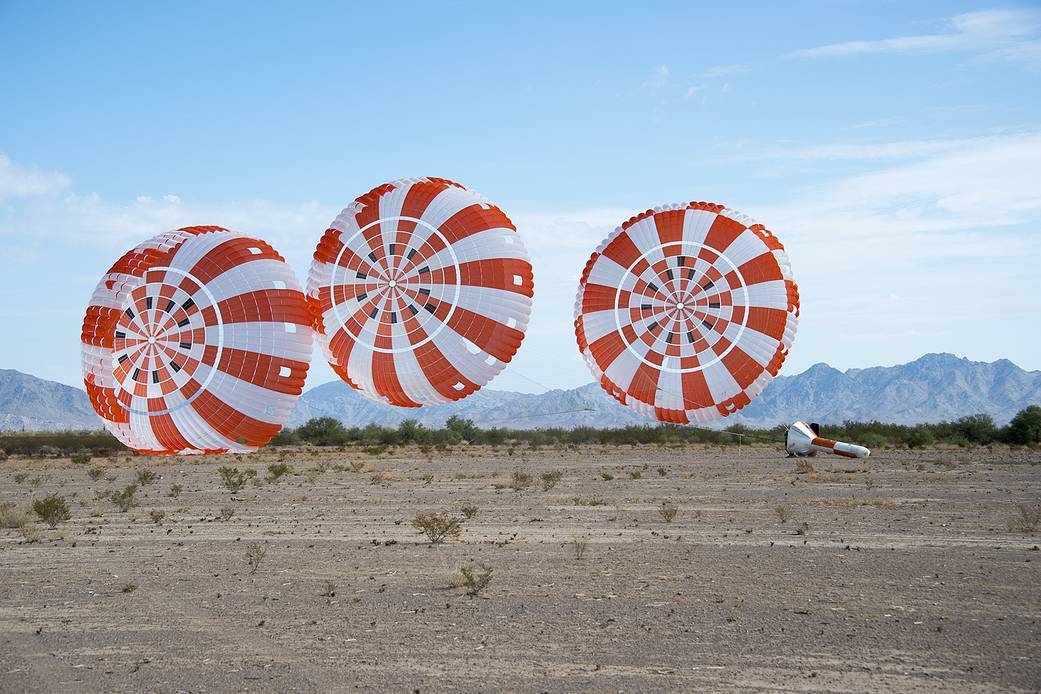The parachute system for Orion, America’s spacecraft that will carry humans to deep space, deployed as planned after being dropped from an altitude of 6.6 miles on July 12, at the U.S. Army Proving Ground in Yuma, Arizona. Data from the successful seventh drop in a series of eight qualification tests will help NASA engineers certify Orion’s parachutes for missions with astronauts.
This was the final test using a special dart-shaped test article. The last test in the series, scheduled for September, will use a capsule-shaped test article representative of the spacecraft NASA will use on Orion’s upcoming missions, including the first crewed mission, Exploration Mission-2.
To demonstrate the system’s robustness, this test evaluated parachute deployment under conditions that exceeded the requirements for a system carrying crew. Engineers dropped the dart-shaped test article from an altitude that allowed it to generate enough speed to simulate almost twice as much force on the main chutes as would be expected under normal conditions. Orion’s full parachute system includes 11 parachutes — three forward-bay cover parachutes, two drogue parachutes, three pilot parachutes, and three main parachutes that will reduce the capsule’s speed after reentry in support of a safe landing in the ocean.
When deployed, each of Orion’s three main parachutes expands to 116 feet in diameter and contains enough fabric to cover 80 yards of a football field, but is carried aboard Orion in containers the size of a large suitcase. For storage, the parachutes are compacted with hydraulic presses at forces of up to 80,000 pounds, baked for two days and vacuumed sealed. Once packed, they have a density of about 40 pounds per cubic foot, which is roughly the same as wood from an oak tree.
Credit: NASA





























